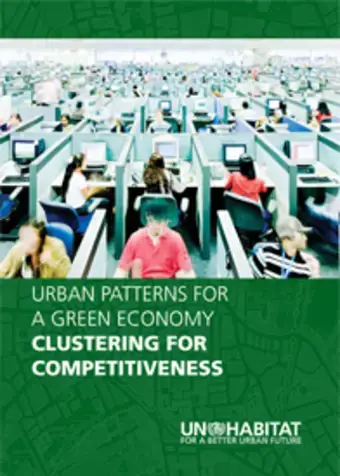 At the United Nations Sustainable Development Summit on 25 September 2015, world leaders adopted the 2030 Agenda for Sustainable Development, a set of 17 Sustainable Development Goals (SDGs) to end poverty, fight inequality and injustice, and tackle climate change by 2030.
At the United Nations Sustainable Development Summit on 25 September 2015, world leaders adopted the 2030 Agenda for Sustainable Development, a set of 17 Sustainable Development Goals (SDGs) to end poverty, fight inequality and injustice, and tackle climate change by 2030.
The SDGs build on the Rio+20 outcomes and the Millennium Development Goals (MDGs), eight anti-poverty targets that the world committed to achieving by 2015.

 Part of a series of four entitled Urban Patterns for a Green Economy, this guide (Working with Nature) focuses on the effect of unplanned, rapid growth of cities on the functioning of a city-region's natural systems. It outlines how guided development can maximise the ability of ecosystems to support sustainable human and natural processes.
Part of a series of four entitled Urban Patterns for a Green Economy, this guide (Working with Nature) focuses on the effect of unplanned, rapid growth of cities on the functioning of a city-region's natural systems. It outlines how guided development can maximise the ability of ecosystems to support sustainable human and natural processes. UN-Habitat's vision of urbanization encompasses all levels of human settlements, including small rural communities, villages, market towns, intermediate cities and large cities and metropolises, i.e. wherever a stable community is continuously located and there are housing units together with permanent social and economic activities, common public space, urban basic services and local governance structure.
UN-Habitat's vision of urbanization encompasses all levels of human settlements, including small rural communities, villages, market towns, intermediate cities and large cities and metropolises, i.e. wherever a stable community is continuously located and there are housing units together with permanent social and economic activities, common public space, urban basic services and local governance structure.